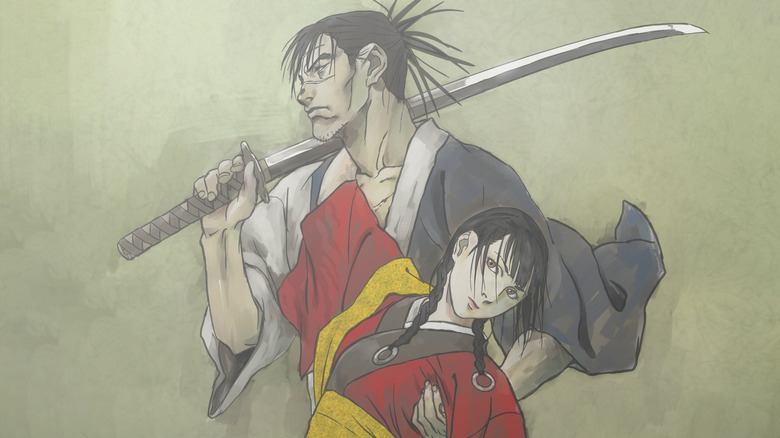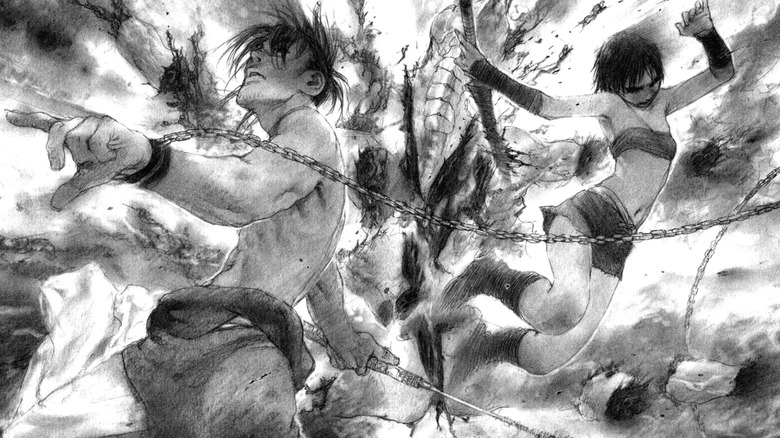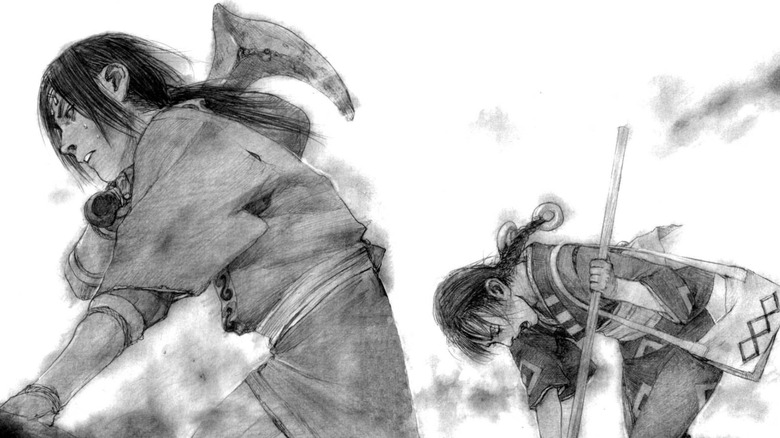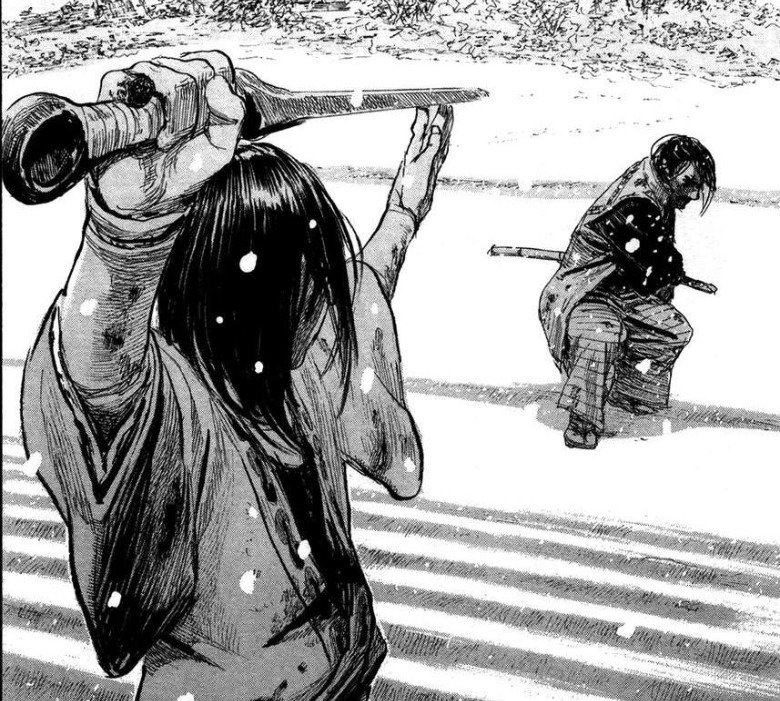Blade Of The Immortal Is The Best Samurai Comic For Shogun And X-Men Fans
The two buzziest TV shows of 2024 so far are FX's "Shōgun," adapting James Clavell's 1975 book about an Englishman who winds up in 17th century Japan from novel to miniseries, and "X-Men '97," a revival of every millennial's favorite "X-Men" cartoon from 1992. But what if I told you there was a comic out there which combined the thrills of both these shows into one?
That comic is Hiroaki Samura's samurai manga "Blade of the Immortal." Set during Japan's Edo period, the titular immortal is Manji, a ronin with a checkered past. So checkered, in fact, that he was cursed by a witch with kessen-chū — "bloodworms," or grubs infused in his body that enable him to heal from almost any injury and keep Manji in his physical prime.
If you've been watching "Shōgun," you'll know how important honorable death was to warriors in feudal Japan, so Manji's immortality is not a gift. If he wants to die, he must kill 1000 evil men to balance the cosmic scales. He gets his chance to do so when a young girl named Rin Asano approaches him, asking him for help in avenging the murder of her parents.
Manji is where the "X-Men" connection comes in — he's basically a declawed Wolverine. His partnership with Rin echoes the young women Logan has taken under his belt: Kitty Pryde, Rogue, Jubilee, and X-23 (played by Dafne Keen in 2017's "Logan"). Since the Japan-set 1982 "Wolverine" comic mini-series (by Chris Claremont and Frank Miller), Wolverine has also been associated with the samurai motif. The 2013 film "The Wolverine" even featured Logan traveling to Japan, where one of the enemies he faced was played by Hiroyuki Sanada of "Shōgun."
"Blade of the Immortal" is the closest "X-Men" fans will get to a fully-fledged "Samurai Wolverine" book.
Blade of the Immortal delivers on the samurai sword fights
"Shōgun" is more of a political drama, not an action show. As /Film's Michael Boyle explained, the finale of "Shōgun" is a deliberate anticlimax for audiences expecting a war epic. There's a reason many (us included) have compared the show to early "Game of Thrones," even if the showrunner of "Shōgun" disputes the comparison.
There are plenty of great samurai action movies to watch if that's more your speed — and if so, you should read "Blade of the Immortal" too. One scene, where a series of panels adopt the POV of a swordsman cutting down opponents charging towards him, feels like the comic adopting the action language of cinema.
The manga doesn't just deliver heapings of blade-twirling, limb-slicing action, it cuts through feudal Japan's hollow decorum. The villains and (Rin's revenge targets) are the Ittō-ryū, a group of warriors who reject the samurai's Bushido code for a survival of the fittest philosophy. But the action is what carries "Blade of the Immortal." Like any long-running manga series (Samura was writing/drawing it from 1993 to 2012), the narrative sometimes sags under the weight of serialization. When I started reading, I expected something more episodic; would each chapter be Manji hunting a new villain to cross them off the list of 1000?
Nope. If anything Manji's goal fades into the background. This is a comic about Rin's quest, and he's along for the ride to safeguard and teach her. By the story's end, you'll be questioning alongside Manji whether redemption truly can be earned through killing. That said, the art and action in "Blade of the Immortal" will captivate you and keep your attention even if the story doesn't always.
The art of Blade of the Immortal
Unlike most manga, which retains the original Japanese publications' right-to-left compositions, the Dark Horse Comics' release of "Blade of the Immortal" reads left to right. The panels were personally rearranged/redrawn by Samura himself, and so still reflect the author's intent. If you're not familiar with reading manga, and haven't rewired your brain to read stories left to right, "Blade of the Immortal" comes without this hurdle.
(There's a reason for this change. Manji wears a Buddhist swastika on the back of his black-and-white robe; simply mirroring the art would make this look like a Nazi symbol. The Dark Horse editions of "Blade of the Immortal" even include a disclaimer about the symbol to be on the safe side.)
Sadly I can't just share a full gallery of Samura's art, but it's unlike any other comic I've read. He doesn't use the exaggerated proportions or costume designs often seen in other manga. Every character looks right out of the Edo period and exists against realistic backgrounds. While Samura's art style is realistic, it is not photorealistic. He uses thin, uneven linework and aggressive hatching; you can tell these images were drawn with a pencil. Some manga (especially the shōnen ones), I do wonder whether they could be improved with color. "Blade of the Immortal," though, is one of the best arguments for black-and-white comics I've experienced.
"Blade of the Immortal" is available in both physical and digital releases. The series has been published in 31 single-volume editions, a 10-volume paperback omnibus editions (combining three volumes in a single binding), and a 10-volume hardcover "Deluxe Edition" series.
The manga has also been adapted into an anime twice; first in 2008 and 2019. Only the latter is completed and widely available for viewing. Takashi Miike adapted "Blade of the Immortal" into a live-action film (with an abbreviated story) in 2017.



